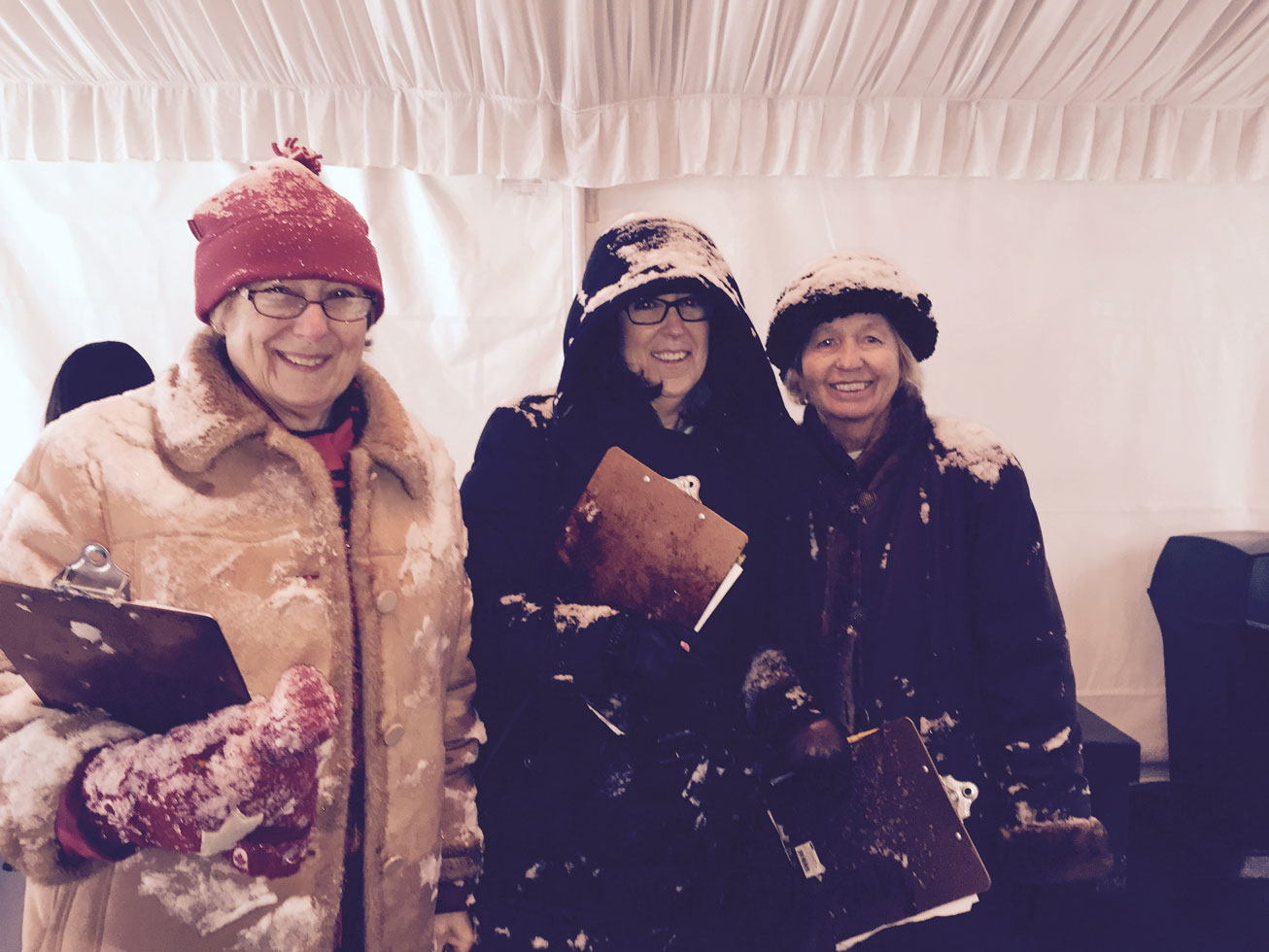As the Winter Olympics in Beijing get underway, veteran skating judge Lucy Curley Joyce Brennan ’56 is at home in New York City. The rules of the International Skating Union (ISU) require Olympic (championship) judges to be under the age of 70, which is just fine with Brennan, who knows well the high stakes of this much-anticipated competition and likes to see younger judges get their chance to assess the sport. These days — and perhaps always — her greatest satisfaction comes from judging local competitions and motivating skaters at the grassroots.
Over the course of more than 60 years as a skating official, Brennan has judged at the Winter Olympics (1988 and 2002) and served as a judge or referee at World Championships, World Junior Championships, European Championships, and other competitions in the U.S. and around the world. And on January 9, her outstanding contributions to the sport were recognized when she was inducted into the U.S. Figure Skating Hall of Fame, which includes an impressive list of distinguished skaters, coaches, and officials, among others.
“It’s a great honor, and I can’t believe I’m with great skaters such as [two-time Olympic gold medalist] Dick Button and [Olympic gold and silver medalist] Carol Heiss,” says Brennan. “I skated in Lake Placid with them. When I skated, Dick Button [teased me], ‘If you jump any lower, you’ll be landing behind where you take off.’”
Growing up in Manhattan, Brennan spent much of her childhood on the ice. Her family belonged to the Skating Club of New York, which was once located at the Iceland rink in the old Madison Square Garden building at 50th Street and Eighth Avenue. When she went off to boarding school, she kept up her grades so she could skate in the summers, as per her mother’s promise.
At Barnard, she enjoyed living at home and commuting to campus, which was an easy subway trip to the ice rink. Despite not being a competitive skater, Brennan still trained because she was intent on passing the U.S. Figure Skating Association’s most difficult skating challenges — the eighth figure test and the senior free skate test. It took her until she was 23 to finally accomplish this formidable feat.
Figure skating judges get their start by judging test sessions, much like the ones Brennan endured to pass the figure and free skate tests. The first step is to judge small competitions, advancing to regional and sectional competitions and eventually to the high-profile events, such as the U.S. Figure Skating Championships. If judges show exceptional prowess, they are allowed to take the International Skating Union (ISU) exams to become international judges and then world championship judges.
Skating judges and referees are volunteer positions, but the path to judging at the highest levels of the sport is arduous and requires years of commitment and practice as well as the successful completion of written and oral examinations.
Brennan’s interest in judging began as a teenager, when she first attended a couple of judging seminars while summer skating. She grew frustrated when she realized that many judges lacked real skating experience, so when opportunities presented themselves to her, she took them, knowing she had that relevant skill set. “I wanted to become a national judge so I could judge [the eighth figures tests],” Brennan explains. “I did not like the way the figure tests were judged by some people that didn’t do the figures themselves.”
But it wasn’t just her knowledge of skating that benefited her as a judge; she also had a knack for numbers. In the days before computers, her mathematical skills were quite useful in helping to keep track of scoring. Brennan first served on a judging panel at the U.S. Championships in 1972, balancing her judging duties with being a wife (whose husband sometimes traveled with her) and mother. As she progressed up the judging ladder, there were fewer and fewer women advancing with her. Brennan eventually shattered the ice ceiling as the first American woman to serve as an ISU championship referee in singles and pairs.
While she’s attained a lofty position in skating and has judged the topmost competitions, nothing inspires her and fuels her love of the sport more than being involved at grassroots events. She once turned down a request to judge at an international competition because she had committed to judging at Middle Atlantics, an annual (nonqualifying) competition hosted by the Skating Club of New York each September.
Her passion for skating was evident upon her return from judging the 2002 Winter Olympics. Soon after Salt Lake City, she agreed to judge a local competition held each winter at Wollman Rink in New York’s Central Park.
“I loved every minute of Wollman,” she says. “There were the grandmothers with the flowers. That’s what skating was all about: the enjoyment of just skating and not this super high competition where it’s dog eat dog.
“I want the best for the skaters,” she adds. “I want the ones with talent to go ahead. I want to see progress.” And it is this very championing of skaters that has earned Brennan a rightful place in the U.S. Figure Skating Hall of Fame.
—LOIS ELFMAN ’80


